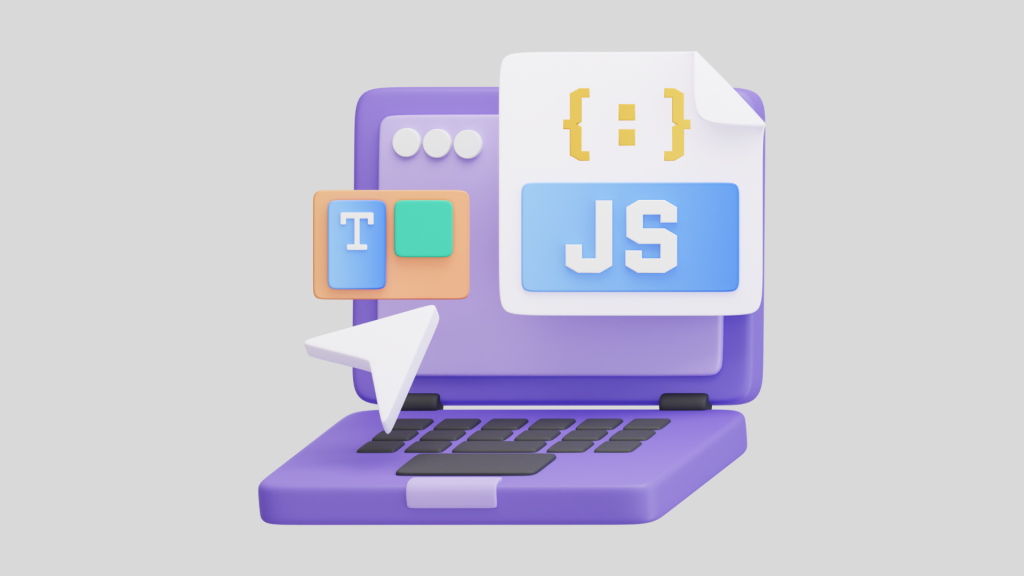ReactJS is one of the most popular JavaScript libraries in the programming world. Developed by Facebook’s software engineer, Jordan Walke, ReactJS is designed for creating fast and interactive user interfaces for web applications.
If you’re still on the fence about using ReactJS in your projects, here are nine advantages of React JS that might change your mind.
1. Efficiency in Development:

The first and most significant of all the advantages of React JS is that it adopts a unique approach to building user interfaces by breaking them down into reusable components. Think of components as building blocks representing different web page parts, such as buttons, forms, or navigation bars. This component-based architecture offers several benefits:
· Modular Development:
Developers can create small, self-contained components encapsulating specific functionality or UI elements. This modularity promotes code reusability, as components can be easily plugged into different application parts without having to rewrite the same code multiple times.
· Simplified Maintenance:
With ReactJS, maintaining large-scale applications becomes more manageable. Since each component is responsible for its logic and rendering, developers can isolate and troubleshoot issues more effectively.
· Streamlined Collaboration:
The component-based nature of ReactJS fosters collaboration among team members. Developers can work on different components simultaneously. This leads to faster development cycles and smoother integration of features.
2. Virtual DOM for Enhanced Performance:

Traditional web development involves directly manipulating the Document Object Model (DOM) to update the UI in response to user interactions or data changes. However, this approach can be inefficient, especially when dealing with large datasets or frequent updates.
One of the other advantages of React JS is that it introduces the concept of a Virtual DOM, which serves as a lightweight representation of the actual DOM. Here’s how it works:
· Virtual Representation:
Whenever changes occur in the application’s state or props, ReactJS constructs a new Virtual DOM tree by reconciling the differences between the previous and current states.
· Efficient Diffing Algorithm:
ReactJS employs a diffing algorithm to compare the old and new Virtual DOM trees and identify the minimal set of DOM operations needed to update the actual DOM. By minimizing unnecessary DOM manipulations, ReactJS optimizes rendering performance and reduces the overhead associated with reflows and repaints.
· Batched Updates:
ReactJS batches multiple DOM updates into a single transaction, optimizing performance by minimizing the number of browser reflows and ensuring smooth, jank-free animations and transitions.
· Cross-Platform Consistency:
The Virtual DOM abstraction remains consistent across different platforms and environments. This enables developers to write once and deploy anywhere, whether a web browser, mobile device, or server-rendered application.
3. Easy to Learn and Use

Another of the advantages of React JS, for which it is celebrated, is its simplicity and user-friendliness. This makes it an accessible entry point for developers.
Unlike other development frameworks that require a deep dive into complex concepts, ReactJS provides a gentle learning curve. It focuses on the fundamental principles that empower developers to build impressive applications swiftly.
· Straightforward Design
The design philosophy behind ReactJS prioritizes clarity and efficiency by harnessing the power of JSX, an extension that allows HTML quoting and HTML tag syntax application in JavaScript. With this, developers can craft high-quality UIs in a format that’s easy to understand and use. This blend of JavaScript with HTML syntax enhances the development experience, enabling faster coding and debugging processes.
· Abundant Resources and Documentation
A key factor contributing to the ease of learning ReactJS is the wealth of resources and comprehensive documentation available. Beginners can quickly find their footing by exploring the numerous tutorials, guides, and official documentation that break down complex concepts into manageable, easy-to-understand segments.
4. Unidirectional Data Flow:

ReactJS follows a unidirectional data flow pattern. This means that data flows in a single direction throughout the application. This approach simplifies the management of the application state and reduces the likelihood of bugs and inconsistencies.
Here’s how unidirectional data flow works in ReactJS:
· Data Propagation:
In ReactJS, data flows downward from parent components to child components via props. Parent components pass data and callbacks as props to child components. This allows child components to display the data and trigger actions based on user interactions.
· Immutable Data:
ReactJS encourages using immutable data structures, where data cannot be directly modified once created. Instead of mutating data directly, React components create new copies of data when changes occur.
· State Management:
React components can maintain an internal state using the state hook or class-based state. Changes to component state trigger re-renders, updating the UI to reflect the latest state of the application.
5. Cross-Platform Compatibility:

ReactJS extends its versatility beyond web development with React Native, a framework for building Native Applications using JavaScript and React principles.
Here’s why React Native is a game-changer:
-
Single Codebase, Multiple Platforms:
With React Native, developers can leverage their existing knowledge of ReactJS to build mobile apps for both iOS and Android platforms using a single codebase. This is an extreme help to providers of cross-platform mobile app development solutions as this approach significantly reduces development time and effort. This way, developers no longer need to maintain separate codebases for each platform.
-
Native Performance and Look:
Unlike hybrid frameworks that render web views within a native wrapper, React Native components compile native UI elements. It ensures optimal performance and a native look and feel. This allows developers to create high-quality mobile experiences that rival those built with traditional native development tools.
React Native provides access to many platform-specific APIs and native modules. It allows developers to integrate device features such as camera, geolocation, and push notifications seamlessly into their applications. This level of integration enables developers to create feature-rich, immersive mobile experiences.
6. High-Performance Web Design with ReactJS

One of the most awesome things about ReactJS is how it can help you build beautiful, high-performing user interfaces or App UI/UX Design. A user interface is everything you see when you’re using a website or app – like buttons, forms, text, images, and so on.
Making these elements look good and work well is super important, and ReactJS offers a helping hand to developers to create such a cool experience for users.
7. SEO-Friendly Development:

Search Engine Optimization (SEO) is crucial in driving organic traffic to websites and increasing their visibility in search engine results. ReactJS empowers developers to create SEO-friendly web applications through server-side rendering (SSR) and other optimization techniques:
· Server-Side Rendering (SSR):
SSR involves rendering the initial HTML of a web page on the server before sending it to the client’s browser. This approach ensures search engine crawlers can easily parse and index the content.
· Dynamic Meta Tags and URLs:
ReactJS enables developers to dynamically generate meta tags and URLs based on the rendered content. It Ensures that each page is properly indexed and categorized by search engines. This level of flexibility allows developers to optimize the website’s metadata for relevant keywords.
· Progressive Web App (PWA) Support:
ReactJS supports the development of Progressive Web Apps (PWAs), which combine the best features of web and native applications to deliver reliable, engaging user experiences. PWAs are inherently SEO-friendly, as they can be crawled and indexed like traditional websites.
8. Future-Proof Technology:

As technology evolves, ReactJS remains well-positioned to adapt and thrive in an ever-changing ecosystem. Its focus on declarative programming, component reusability, and performance optimization aligns with emerging trends and best practices in web development. This ensures that ReactJS will remain a cornerstone of front-end development for years.
9. A Strong Community:

Lastly, another one of the great advantages of React JS is that ReactJS isn’t just a technology; it’s a community. And when it comes to choosing a framework or library for your project, having a vibrant and active community can make all the difference.
Let’s explore why the ReactJS community is a treasure trove for developers.
· Never Feel Stuck
Imagine you’re working on your project and hit a snag – something doesn’t work, and you can’t figure out why. With ReactJS, help is often just a post or search away. The community comprises thousands of developers, from beginners to experts, all willing to lend a hand. Most of the time, even our experts at The App Founders have asked for help from these communities. They don’t just help you when you are stuck but are a great place for continuous learning.
· Learning and Resources
The ReactJS community is passionate about sharing knowledge. There’s a treasure trove of resources available for free. Beginner tutorials, deep-dive articles on advanced topics, video lectures, and interactive coding examples are all at your fingertips.
Conclusion:
So many advantages of React JS make it indispensable for modern web development projects. From its efficiency in development and performance optimizations to its robust ecosystem and cross-platform compatibility, ReactJS empowers developers to easily build sophisticated web applications.
By embracing ReactJS, you enhance the user experience and future-proof your projects in an increasingly competitive digital landscape.















